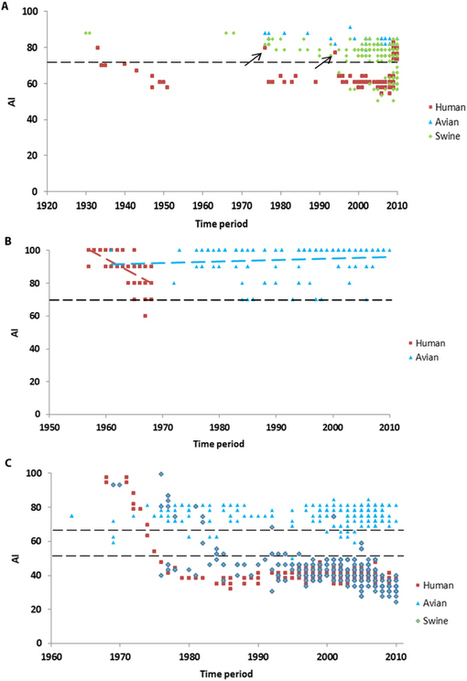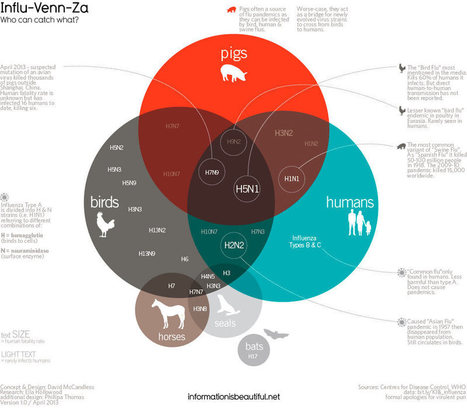The 2009 swine-origin H1N1 influenza, though antigenically novel to the population at the time, was antigenically similar to the 1918 H1N1 pandemic influenza, and consequently was considered to be [ldquo]archived[rdquo] in the swine species before reemerging in humans. Given that the H3N2 is another subtype that currently circulates in the human population and is high on WHO pandemic preparedness list, we assessed the likelihood of reemergence of H3N2 from a non-human host. Using HA sequence features relevant to immune recognition, receptor binding and transmission we have identified several recent H3 strains in avian and swine that present hallmarks of a reemerging virus. IgG polyclonal raised in rabbit with recent seasonal vaccine H3 fail to recognize these swine H3 strains suggesting that existing vaccines may not be effective in protecting against these strains.
Vaccine strategies can mitigate risks associated with a potential H3N2 pandemic in humans.



 Your new post is loading...
Your new post is loading...












No-one think of H3N2...except, as it happens, these folk - who have shown quite convincingly that circulating strains of H3N2 in birds and pigs would be quite capable of avoiding vaccine-conferred immunity, and potentially of causing a pandemic, if they reassorted with human-infecting viruses.
I can't help but feel that there are several ticking influenza pandemic time bombs out there...H5N1, H7N9, and now H3N2.